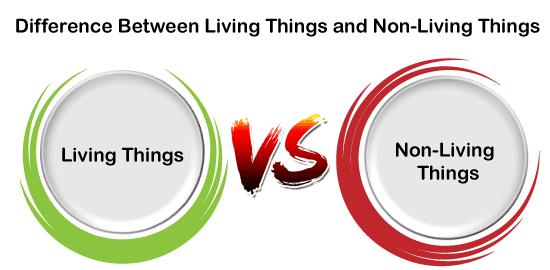Difference between Living Things and Non-Living ThingsThere are several things on this planet that are either living or non-living. We have various things on earth like mountains, oceans, beaches, etc. But all these things that nature has to offer are categorized into two significant kinds, i.e., living things and non-living things. Both these non-living and living things play an important role in environment. The basic difference between them is that living things grow, eat, reproduce, etc., while non-living things are not capable of such functions. But sometimes, non-living things have negative impacts on the environment because of the material they are made of. Living things like humans and animals are productive for the environment. Well, there are a lot of differences among these non-living and living things. But before that, it is essential to understand the fundamental meaning of such terms. So, let us discuss them in detail. 
Living ThingsA living thing comprises of cells. They are called as organisms that can either be single-celled or multiple-celled. Living things have several qualities. For instance, responding to stimuli, reproducing, adapting to the environment, ability to move, etc., are some of the characteristics of living things. Living things/ organisms gain energy from the food they eat and sustain themselves. Now, these living organisms can either feed on the living beings or dead beings. For instance, carnivores like lions or tigers sometimes feed on dead animals like deer, etc. Plants, animals, and humans are biotic parts of the environment. Well, there are a lot of characteristics exhibited by living things. Living organisms have microscopic structures. All these creatures gain energy through cellular respiration. Through the process of cellular respiration, these organisms perform various functions. The cycle of a living organism goes like; birth, growing, reproduce, and death. Non-Living ThingsNon-living things are defined as things that can take any form, have the ability to manipulate/ influence, and impact one's life. Well, in biology, a non-living thing is defined as a thing without life. Examples of non-living things include rocks, buildings, weather, air, chair, etc. Non-living things are also called inanimate things. There are many characteristics of these non-living things. For instance, they cannot excrete, grow, eat, reproduce, adapt, etc. Basically, the non-living things cannot perform the functions which the living things are capable of performing. There is one more kind of non-living things, i.e., natural non-living things. Natural non-living things are defined as things that are founded in nature. Such things are not made by man. For instance, weather, sky, clouds, mountains, etc., are natural non-living things. Now, let us look at the contrasting points between them.
So, these are some of the contrasting points between living and non-living things. Both non-living and living things are essential parts of nature. Well, they possess many characteristics. So, let us take a look at them. Characteristics of Living Organisms
Characteristics of Non-Living Things
So, these are some of the features of non-living and living things. Well, both living and non-living things have specific importance in nature. These organisms and inanimate objects have certain contrasting points that have been mentioned above. Thus, both living and non-living things are essential parts of the earth.
Next TopicDifference between
|
 For Videos Join Our Youtube Channel: Join Now
For Videos Join Our Youtube Channel: Join Now
Feedback
- Send your Feedback to [email protected]
Help Others, Please Share










